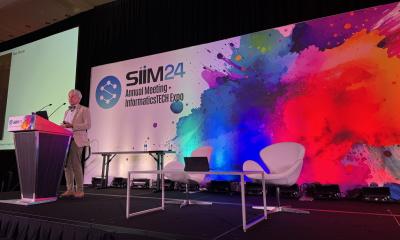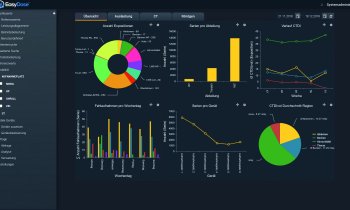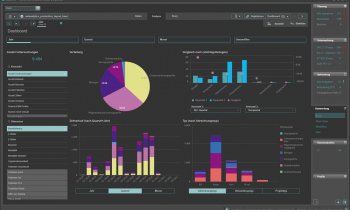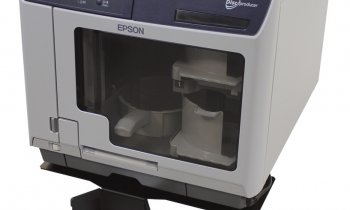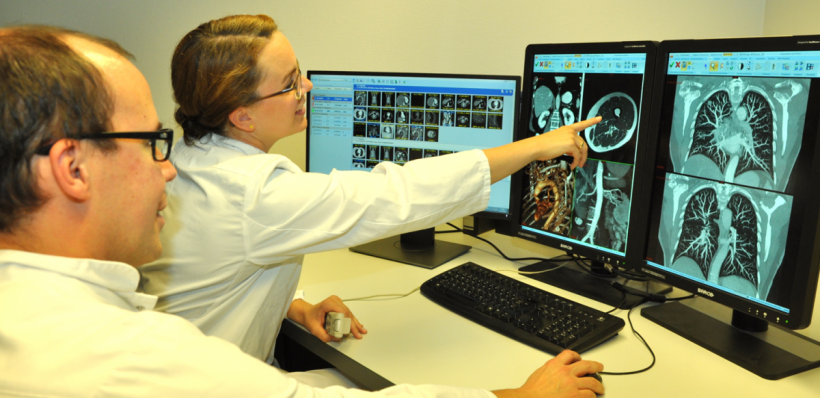
Article • Diagnostic radiology solution
Going fully digital in a single key stroke
Installing a complete diagnostic radiology solution to network six sites of a hospital group, to process, manage and archive image data acquired across all modalities, is a ‘challenge’, acknowledged by Professor Dr Peter Landwehr, Medical Director of the Clinic for Diagnostic and Interventional Radiology of Diakovere Henriettenstift, Hanover, Germany. In 2010, he and his team overcame that challenge and they are extremely happy with the results. ‘Why didn’t we do this sooner?’ asked those involved in sourcing and implementing the solution.
How it all began
A complex tender procedure to purchase diagnostic radiology viewer, enterprise archive and an enterprise viewer solution resulted in six manufacturers being short-listed. For the final decision, comprehensive requirements documents and detailed specifications were drafted and systematically evaluated by a fifteen-strong committee representing all user groups and the IT department.
Understanding how the technology is supported in a real-life clinical setting is just as important as the technology itself. An experienced consultant familiar with the market supported the committee. ‘It was crucial for us to have professional expertise on board because this was our very first diagnostic radiology solution.’ The Hanover-based hospital group was a ‘digital radiology late-adopter’ due to a drawn-out process when the legal structure of the local hospitals was turned into a holding. ‘Since we were lagging behind, we wanted full adoption from day one,’ Landwehr recalls. A precise needs assessment and an operational plan were established aiming to optimise the cost-benefit ratio while avoiding common deployment mistakes.
The winner is…
Finally, the selection committee unanimously opted for the provider they considered offered superior functionality and support: Carestream. The firm’s solution scored with ease-of-use inside and outside of radiology, a slew of innovative functions, a convincing value-for-money ratio and an innovative team focused on future developments.
From analogue to digital
‘Before we could put the new solution into operation we had to get rid of a few analogue standalone solutions,’ Landwehr points out, adding that several CR systems had to be purchased and some ultrasound systems had to be made DICOM-compatible.
‘At the same time we worked well with Carestream’s DRX1,’ he says. Above all the radiographers liked the wireless cassette-based X-ray solution because it offers mobility and good image quality.
Solution roll-out

Issue of the purchase order kicked off an intensive six-months’ planning and implementation phase, culminating in the hardware installation: core IT components, local workstations with modern screens and reconfiguring certain modalities. At the same time several workflows were redesigned.
After ten months everything was set up. In June 2010 the countdown arrived: overnight X-ray was switched from analogue to digital. No exception allowed? Only one: a complete solution breakdown, for example, caused by network or server failure, was considered the only situation when films can be printed out. This tough stance paid off. After only a year film usage had decreased to one percent. ‘For a digitisation project this is an extraordinary result, since it takes us to profitability sooner than we had anticipated,’ Landwehr points out.
Positive feedback all around
Despite the staff’s positive attitude towards the new digital solution, there were traces of scepticism. This is normal when a new technology is introduced that disrupts and forces changes upon well-oiled processes. “But when it ran without a hitch and everybody was comfortable with operating it the entire team was happy and we received positive feedback, not only here in radiology, but also from the non-radiology clinics we work with,’ Landwehr concludes.
A system scales with the users
What we do expect are intelligent and feasible solutions to optimize our workflow day in day out
Prof: Peter Landwehr
Six years have now passed. Quantity and quality of the requirements have been increasing constantly mainly due to images in CT and MRI, with rising expectations with regard to fast access to the image data.
The internal technology landscapes, as well as the provider’s system, have continuously developed high-performance processors and huge data storage space at hospitals, new releases with new functionality at the provider’s. ‘We are not interested in the dernier cri when it comes to our diagnostic platform – what we do expect are intelligent and feasible solutions to optimize our workflow day in day out,’ the radiologist emphasises. ‘So far, the provider has met the expectations with flying colours – a fact that confirms the committee’s initial decision. However, in these rapidly changing times none can rest on the laurels.
Current highlights
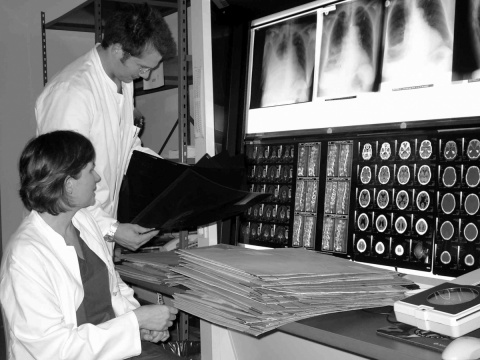
So far, the provider has provided fully-integrated 3D-/MPR-/MIP functionality. ‘Other manufacturers can’t offer comparable quality,’ Landwehr believes. He underlines the excellent workflow support, e.g. in mammography, contrast-enhanced ultrasound, functional imaging in colour duplex ultrasound and hybrid imaging.
Today the system also offers support by semi-automated assessment of oncological studies. For lesion management and size comparison current and historic images can be viewed side-by-side in MIP or 3-D and images acquired in different planes can be automatically correlated in anatomy. ‘That even works across modalities with CT and MRI,’ says Landwehr.
Outlook
In radiology there will be ever more data to be evaluated; ever more high-performing tools are needed to support radiologists due to scarcity in the profession. Landwehr believes radiologists with professional expertise in diagnostics and intervention will still be here in 30 years’ time ‘but they’ll need more technological backup to meet clinical requirements’.
A system cannot simply store images and ensure access. The major task will be to provide advanced post-processing workflow such as semi-automated protocols to screen lesions, cross-referencing different clinical and imaging data sources, such as from endoscopy and pathology for clinical decision support, or an intelligent worklist assignment to optimise sub-specialty reading, thus freeing time and capacity for a radiologist to deal with complex clinical imaging questions.
‘Equipped with such tools for structured reading, we will be able to meet the challenges of tomorrow and the day after,’ Landwehr predicts.
Responsible radiology
A gung-ho ‘Big Data will solve all problems’ approach is wrong.
Prof. Peter Landwehr
While the technological support and innovative approaches by the manufacturers are indispensable, Landwehr urges radiology, as a discipline, to spearhead the development of enterprise imaging systems. Why? Dealing with huge volumes of imaging data has to be organised first and foremost with an appropriate clinical context, then to make available for clinical and scientific purposes. ‘This is not something we can leave to the IT experts and industry. ‘As clinically focused radiologists, we’re in the best position to decide where more data will indeed translate into added value for the patient and where it won’t.’ A gung-ho ‘Big Data will solve all problems’ approach is wrong', warns Landwehr, because it will lead to ‘Apple, Google and other usual suspects knocking on our doors and defining health and disease based on what’s good for them. Collecting data just for the purpose of collecting does not make sense.’
Far rather, Landwehr is convinced, radiology, both in diagnostics and intervention, must be even more innovative, more clinically effective. ‘Technological tools, such as a modern enterprise imaging solution, help us to become just that.’
Profile:
Professor Peter Landwehr, who grew up in Remscheid, birthplace of Wilhelm Conrad Röntgen, worked for 14 years in the radiology departments of universities in Bonn, Würzburg and Cologne. His seven years spent as senior physician at the Institute and Polyclinic for Radiological Diagnostics at the University Hospital, Cologne, including three and a half years as managing senior physician, increased his leadership skills. In January 2001 he was appointed medical director of the Clinic for Diagnostic and Interventional Radiology at Diakovere Henriettenstift hospital, Hanover. In October 2015 he gained a professorship from Hanover University’s Medical School and, in 2016, became President of the 97th German Radiology Congress in Leipzig. In 2017 Landwehr will serve as a member of the advisory board of Röntgen’s birthplace foundation in Remsc
05.01.2017





